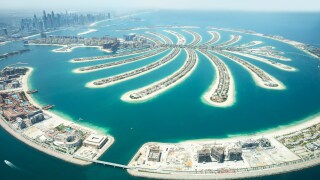
What you can measure, you can manage, so Paris-headquartered European data-centre provider Data4 is using its expert knowledge to further its journey to protect the environment. Jérôme Totel, the group’s innovation and transformation director, tells Capacity how the company is doing this.
Why is protecting the environment essential to Data4, and how has your company organised its sustainability programme?
Sustainability is one of the three pillars of Data4, along with quality and scalability. We have always focused on sustainability, but it wasn’t organised under a single umbrella previously. That's why we decided it was time to create our sustainability programme, Data4Good, which is composed of four streams: the environment, our people, innovation and community.
But first, we feel we have a responsibility in supporting a sustainable digital transition. We can’t live without data centres. As the pillars of digital technology, they support the digital transformation of economies and society as a whole. According to Science, between 2010 and 2018 the global energy consumption of data centres rose just 6% while the amount of compute capabilities increased by 550%, thanks to the performance of both IT equipment and data centre infrastructure.
Along with our partners and the overall ecosystem, we feel we have a role to play in improving the general environmental footprint of IT. We also have a responsibility to reduce our use of energy, rare earth elements, water and so on, as much as we can. In addition, we need to lower our greenhouse gas [GHG] emissions to fight against global warming. That's why it's such a big undertaking internally, and we are taking a lot of action to achieve this.
What should companies do better to help improve their environmental footprint and how is Data4 doing this?
We often only discuss environmental impacts through the lens of GHG emissions, but it's just one part of your footprint. That's why we decided to have a holistic approach, covering the end-to-end lifecycle of our data centres. Other KPIs [key performance indicators] like water utilisation, ecotoxicity, use of mineral resources and the impact of construction also need to be considered. Once you have these figures, you will know exactly where you need to act.
This type of lifecycle analysis [LCA] is important because when you don't have a full view of the impact of construction, operations, recycling and so on, sometimes you only focus on GHG emissions.
Moreover, we have instigated two main actions to decrease our GHG emissions as much as possible. First, we are using new technologies like low-carbon concrete, free cooling and other innovations; and second, we are improving the energy efficiency of our data centres.
We are working on a lot of technologies to improve this efficiency, one good example of which is the building of digital twins of our data centres. To do this, we have decided to use data from between 5,000 and 10,000 sensors located in each of our data centres, with the idea of using this as much as possible with artificial intelligence to optimise our energy consumption.
Another innovation is free cooling, a technique in which hot indoor air is replaced with lower-temperature air from outside the data centre, rather than using a regular cooling system.
What are some of the positive impacts you’ve seen so far?
With its innovative continuous improvement plan, Data4 has managed to reduce the energy consumption of its data centres by 20% in the past 10 years. As well as providing insights into impacts like the depletion of abiotic resources and fine particle emissions, our LCA has helped to identify areas for high-impact action, including making improvements to cooling systems, generators and batteries.
But the customer also has a responsibility. For example, if you decide to extend the life of your IT equipment, it will dramatically decrease GHG emissions, as a lot of this stems from the construction of the IT infrastructure.
That's why we decided to support our customers by supplying KPIs on the environmental impact of their IT to help them make the right decisions. This means our customers can have a dashboard with full visibility of the environmental impact of their hosting space, as well as their IT equipment.
What would you say are Data4’s key achievements on its green journey so far?
This is some recent news that I am incredibly excited to share – we achieved carbon neutrality on Scopes 1 and 2 based on GHG emissions in 2021. This covers in particular the direct emissions resulting from Data4’s owned and controlled assets, and indirect emissions from any electricity purchased, respectively.
To offset the residual GHG emissions of Scopes 1 and 2 that we haven’t been able to reduce, our company has been working with established forestry association FRANSYLVA – which provides a solution that meets the French standard “Label Bas Carbone”. Not only does reforesting help to sequester carbon by creating natural carbon sinks, but it also has a range of other benefits, including protecting local biodiversity and providing employment.
To add to our efforts, we joined the Climate Neutral Data Centre Pact, which is made up of various companies in the IT sector that have committed to make data centres climate-neutral by 2030. With all these efforts, we are making a real push towards sustainability over the next decade and beyond.




